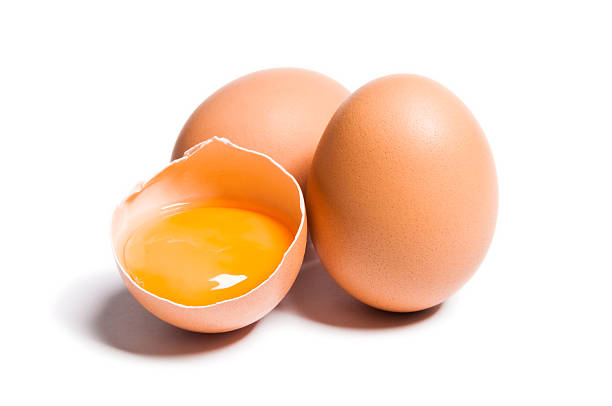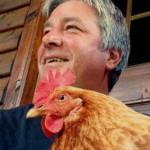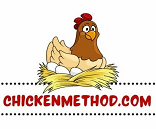They decimate a garden, soil every inch of their domain, don’t care about fences, crow at the least desirable times, and take no heed of passing traffic, trespassing signs, or tongue lashings. So, what are the reasons for raising chickens when common sense dictates otherwise?
Well, baby chicks are adorable and fun to watch, for one thing. Eggs are healthy and delicious whether fried, boiled, pickled, poached, or scrambled, but they are also necessary for food recipes. Along with eggs, chickens can be raised for meat, too. U.S. meat birds number in the billions. Yep, billions – about 8 billion a year.
Chickens are great at catching bugs, including ticks. Their eyesight is about ten times better than ours, so they don’t miss a thing.
They also make fun pets. But that’s only the beginning—read on for more reasons to raise chickens. But first, a bit of history.
Chickens Have Been Part of Our Lives For Centuries
Nobody knows for sure when chickens were domesticated. Archaeological evidence shows domestic chickens in Southeast Asia over 8000 years ago. After they were “tamed” (more like, when they became tolerant of us), they were used for human consumption and cock fighting, and eventually egg production.
The original birds were domesticated Southeast Asian red junglefowl. These birds didn’t lay eggs every day like modern chickens. Daily layers showed up about 3500 years ago in the Middle East. Today, there are about 300 million egg-layers in the U.S. alone.
Although genetic studies point to the Southeast Asian red junglefowl as the common ancestor of today’s various breeds of chickens, genetic dalliances have led to extraordinary variances in the appearance and size of chickens.
The breeding of red, gray, and Ceylon fowl led to the differences in size, shape, and colors we see today. From the Jersey Giant to the smallest bantam, just as all dogs came from the wolf, so did chickens from junglefowl.
These incredibly giving and productive birds have been in lockstep, marching through history with humans for a long time. They will be for a long time to come.
Chicken Eggs Are Healthy Food.

Eggs are used in countless recipes. Eggs are integral to cooking, from cookies to meringues to omelets to souffles. One egg has about 77 calories and is a good source of vitamins A, B5, B12, D, E, K, and B6. They also contain folate, phosphorus, calcium, selenium, zinc, healthy fats, and six grams of protein. Eating protein-rich foods can make one feel fuller longer, build strong muscles and bones, and help with weight management. Eggs have been called the perfect food.
Bodybuilders are famous for eating eggs daily to help get their incredible physiques. Typically, egg whites are consumed to get the protein benefits without the fats and cholesterol associated with excess whole egg consumption.
Average consumers should keep it to around seven whole eggs per week to keep it healthy.
We’ll Kill the Old Red Rooster When She Comes…
Chickens don’t lay at an optimal rate for long, and some don’t lay at all. When chickens stop laying, or if you have a rooster you don’t want, they can be suitable for the table.
Chicken is a wonderful food with many health benefits. According to the National Chicken Council, chicken contains tryptophan, an amino acid responsible for raising serotonin levels in the brain. Serotonin is the “feel-good” neurochemical linked with mood.
Dark and white meat chicken contains vitamin B12 and choline, which may promote children’s brain development, help the nervous system function properly, and aid cognitive performance in older adults. Lean chicken meat is an excellent source of protein that the body can use easily. Foods high in protein may be a tool for managing weight and normal blood sugar.
An essential quality of chicken is that it is utterly delicious. It can be fried, barbecued, baked, grilled, smoked, slow-cooked, boiled, broiled, and microwaved. No matter how you slice it, chicken is darn good food. I like to slow-cook chicken and pull it to mix with a nice BBQ sauce. Mmm, sounds good, huh?
So, I’ve mentioned chicken as food as a good reason to raise chickens, but there is another excellent reason to have them around. If you haven’t noticed, the price of everything has been steadily going up, up, up!
Raising egg-layers is fun and rewarding but not highly profitable. Chickens lay something else that is extremely valuable to the backyard gardener. How about making your own compost for your vegetables and flowers?
Composting Chicken Manure
A chicken will produce one cubic foot of manure every six months. That little tidbit comes from a university study I read. I have 14 chickens. That’s a pile the size of the comfy chair I sit in as I write this every year. What is one to do with all of this, uh, stuff? Please put it in the garden.
The problem is that raw chicken manure can burn and damage plants because it is high in salt and nitrogen. The solution is it must be composted or aged before use. In addition, raw manure can contain pathogens that can harm people and animals.
If composting is done correctly, the process destroys disease-causing organisms, making chicken manure safe for plants, people, and pets.
I’ll lay out a composting method in another article. Let me get away with saying that composting is another reason to raise chickens.
20 Reasons to Raise a Backyard Flock
Raising chickens can be a rewarding experience for many reasons. Here are 20 good reasons to consider:
- Fresh Eggs: Enjoy delicious, fresh eggs daily from your own chickens.
- Healthier Eggs: Eggs from backyard chickens are often healthier and more nutritious.
- Connection to Food Source: Gain a deeper connection to where your food comes from.
- Sustainable Food Production: Contribute to sustainable food production practices.
- Reduce Food Miles: Lower the carbon footprint associated with your food.
- Educational Opportunity: Great for teaching children about responsibility and biology.
- Natural Pest Control: Chickens help control insects and pests in your yard.
- Fertilizer Production: Produce high-quality fertilizer for your garden.
- Cost Savings: Save money on eggs and fertilizers over time.
- Source of Income: Sell eggs or chicks for additional income.
- Therapeutic Benefits: Watching chickens can be calming and reduce stress.
- Entertainment: Chickens have amusing personalities and behaviors.
- Companionship: Some breeds can be friendly and enjoy human interaction.
- Community Building: Connect with other chicken enthusiasts and neighbors.
- Home Security: Chickens can be an early warning system for intruders or predators.
- Environmental Awareness: Learn more about sustainable living and permaculture.
- Heritage Breeds: Preserve rare or heritage chicken breeds.
- Self-Sufficiency: Embrace a more self-sufficient lifestyle.
- Hobby Enjoyment: It can be a fulfilling hobby or pastime.
- Bonding with Nature: Foster a deeper appreciation for nature and animal care.
These reasons highlight the many and varied benefits of raising chickens, whether for practical reasons like food production and pest control or more personal and emotional benefits like education, companionship, and enjoyment.
Chickens Are a Joy To Have
I genuinely enjoy going to my chicken coop every day to gather eggs. It’s like being a kid again looking for Easter eggs, except they are seldom hidden. It’s like finding treasure when young hens start laying for the first time.
That’s the main reason I raise chickens. I don’t personally raise meat birds. I got a couple of them by mistake last spring, and I gave them away when they were old enough – it’s just not my thing.
Raising baby chicks is fun, although challenging at times. The trickiest part is getting a handle on how to incubate chicken eggs.
Among the reasons to raise your fowl is a sense of the old ways that you get when raising livestock. Growing your vegetables, composting… the satisfaction it brings makes missing the day’s soap opera or the evening’s sitcom worthwhile.
It’s simply joyful. There’s no equal that you can find in a chain store that compares with the egg just gathered from the coop ten minutes ago that, when cracked, reveals a dark orange-yellow yolk that stands up in the pan and says with attitude, “I’m fresh!”.
Until next time…
Dave

Chickenmethod.com


Your way of telling all in this paragraph is in fact fastidious, all be able to effortlessly understand it, Thanks a lot.
Well, thank you very much. I aim to be as clear as possible, but my main purpose for this article is to let everyone know how beneficial it can be to have a few chickens around. They eat a lot of bugs–bugs that can harm your garden, and having fresh eggs is fantastic around breakfast time, or anytime really. Thanks very much for your input!